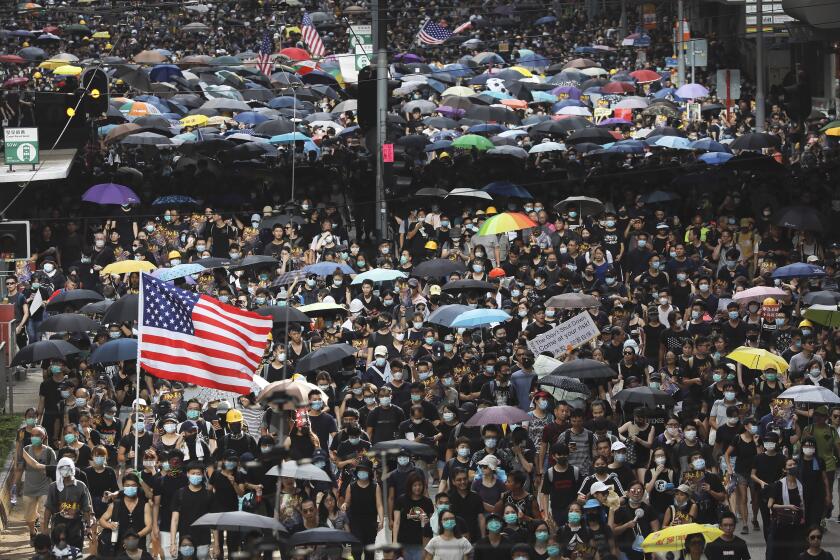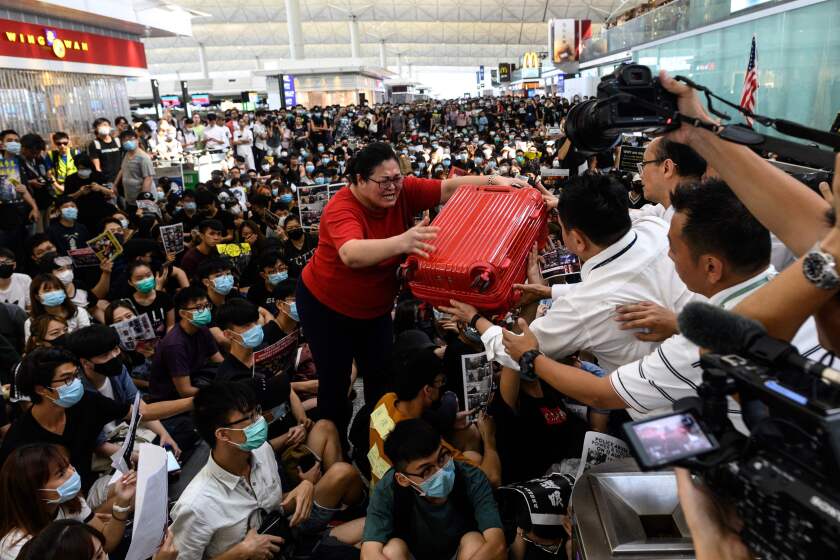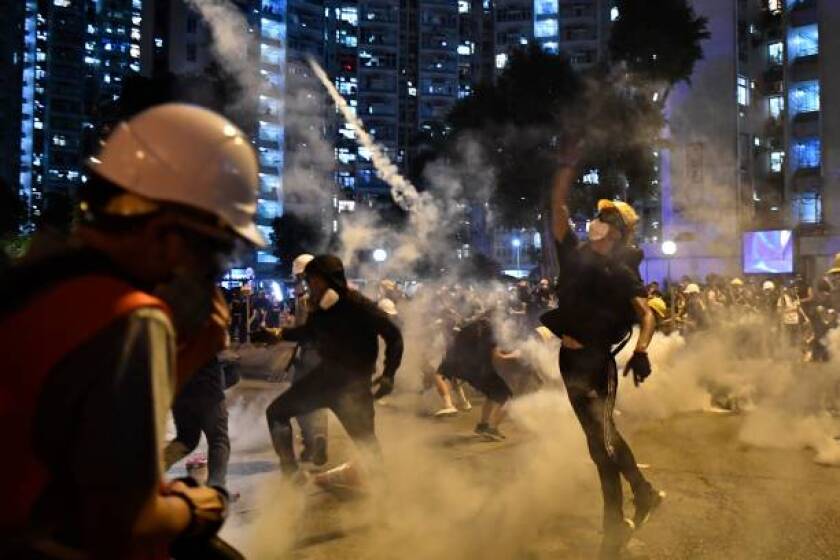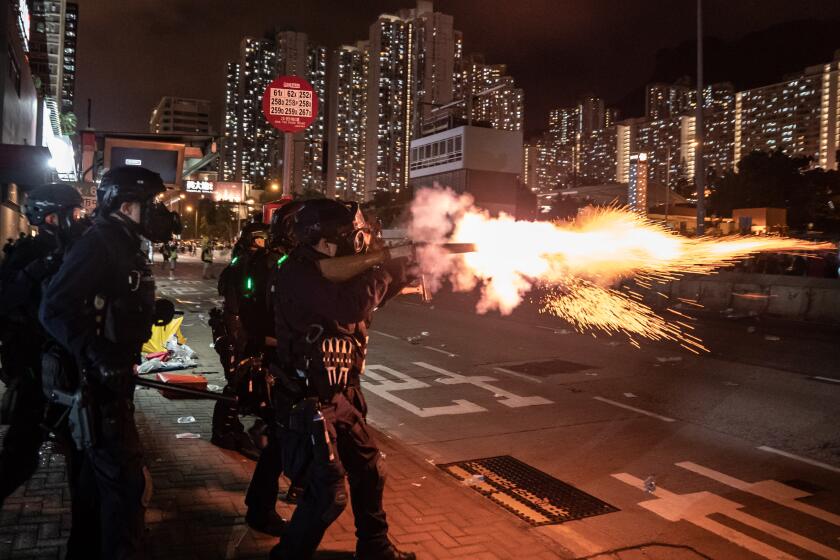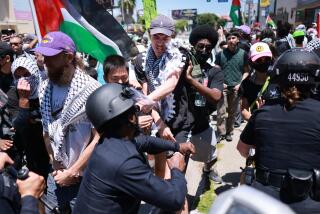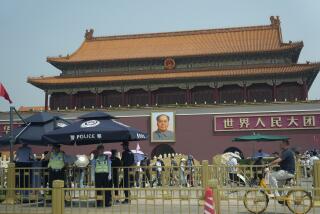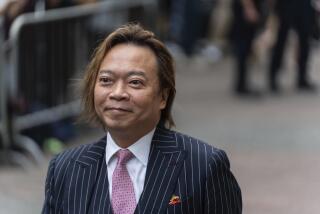Hong Kong protesters took their organizing principle from Bruce Lee. Now some are having second thoughts
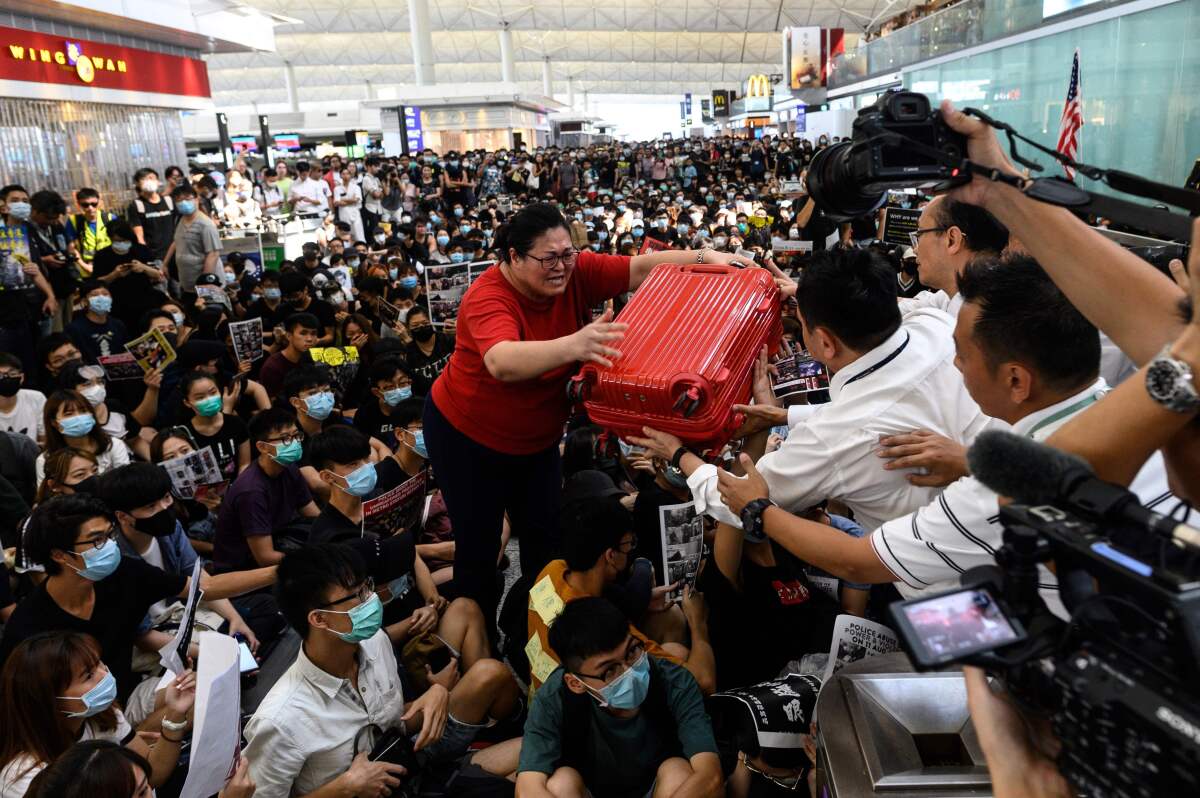
- Share via
HONG KONG — The protester felt torn as an elderly Australian woman in a wheelchair grabbed his hand and asked for help.
She was trying to get home and wanted assistance navigating through the thousands of demonstrators at the Hong Kong International Airport to reach her gate.
If he were in charge, he would have let her pass.
But he wasn’t. Nobody was. And so he deferred to the crowd and its blockade.
“I kept saying sorry to her, but there’s nothing I could do,” said the 25-year-old protester, who spoke on condition that he be identified only by his last name, Chan.
Eleven weeks into Hong Kong’s now famously leaderless movement against police brutality and unwanted influence by authorities in mainland China, protesters have been doing some soul-searching, questioning whether their spontaneous style of demonstration risks going too far.
President Trump’s reaction to the Hong Kong protests has ranged from muddled to indifferent, displaying his disinclination to use his office to promote democracy around the world — a task his predecessors considered a core part of the job — and his focus on trade over human rights.
The merits of decentralization were clear: As long as the movement had no leaders, the Hong Kong government and Beijing would have a harder time quelling it. More than 700 protesters have been arrested, yet thousands keep rallying in the streets.
“Be Water” — the organizing principle protesters borrowed from Bruce Lee, the late Hong Kong American actor and martial artist — has kept them one step ahead of the police.
But on Tuesday, ad hoc activism turned ugly. An airport occupation escalated into conflicts with passengers, clashes with police and attacks on two suspected mainland spies who protesters believed were trying to infiltrate the demonstration.
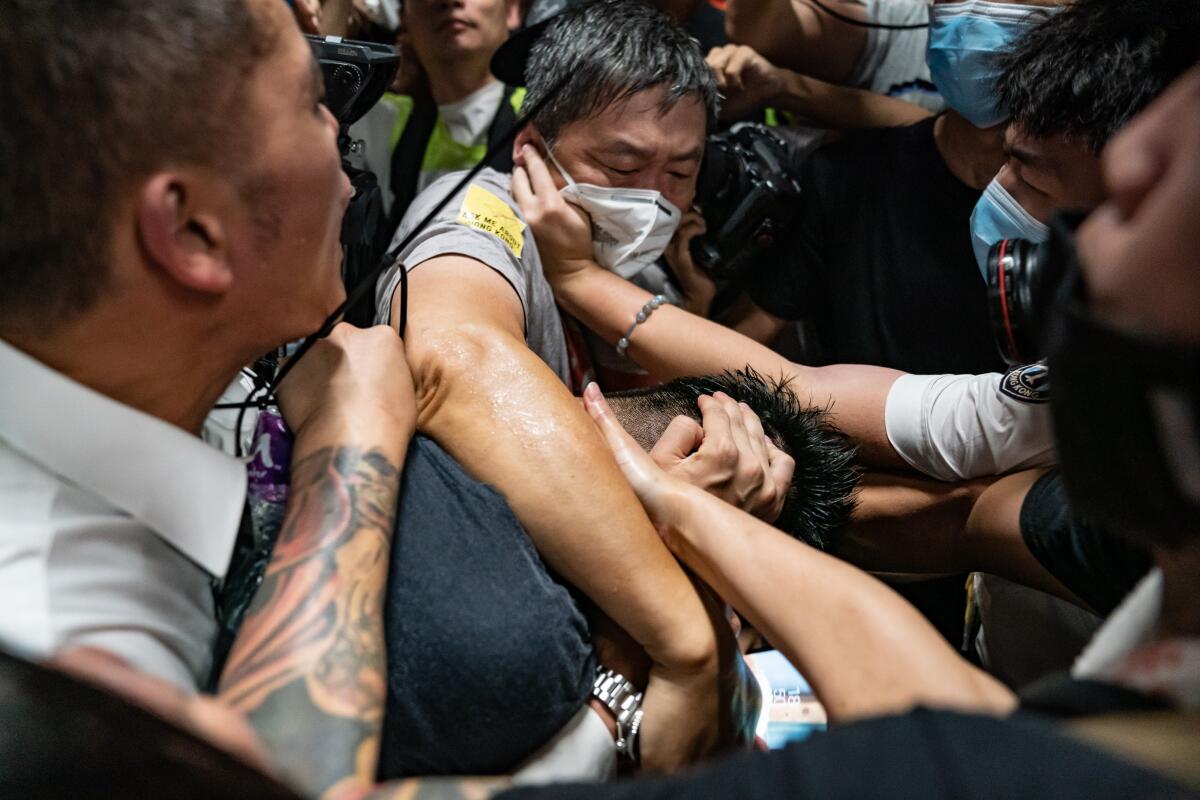
In days that followed, some protesters apologized. Others debated whether their movement needed a code of conduct to reconcile differences between peaceful protesters and more aggressive “front-liners.”
On LIHKG, the Reddit-like online forum where protesters discuss tactics, some invoked “just war theory” and international humanitarian law in debate over rules of engagement with opponents.
“Protesters are not monsters with no bottom line, but restrained, disciplined activists,” read one popular post.
Hong Kong’s government canceled all flights from the city as protesters held a mass sit-in against police violence at the airport.
Nobody asked for a leader or tried to claim command.
Two consensuses have emerged: Hong Kong’s government and police are to blame for the escalation of violence, and the demonstrators will remain united even if they disagreed on tactics.
The protests have started to follow a pattern. Peaceful marches or rallies throughout the afternoon turn into clashes after dark when younger protesters continue marching past approved areas or deadlines. Then police come out, firing tear gas and rubber bullets.
In recent weeks, police have denied permits to many protests to create legal justification for quickly shutting them down.
Protesters are also quick to rally whenever called via Telegram, the encrypted messaging app they use to organize. For example, when police recently arrested a university student for buying a laser pointer, calling it an “offensive weapon,” hundreds of demonstrators flocked to the station where he was being held to chant insults at the police and call for his release.
Riot police quickly arrived, firing tear gas, charging at protesters and angering residents caught in the tumult.
Hong Kong protesters and the Chinese government pushed dueling narratives in two news conferences on Tuesday.
Several pro-democracy legislators often show up at demonstrations as mediators, wedging themselves between protesters and police and urging both sides to calm down.
One of those lawmakers, Fernando Cheung, said that as tensions have escalated his role has been reduced to “almost zero.”
“We are not necessarily welcome,” he said. “The police hate us. They don’t want us to be in the way. The protesters also are becoming more impatient. They see us as a barrier as well.”
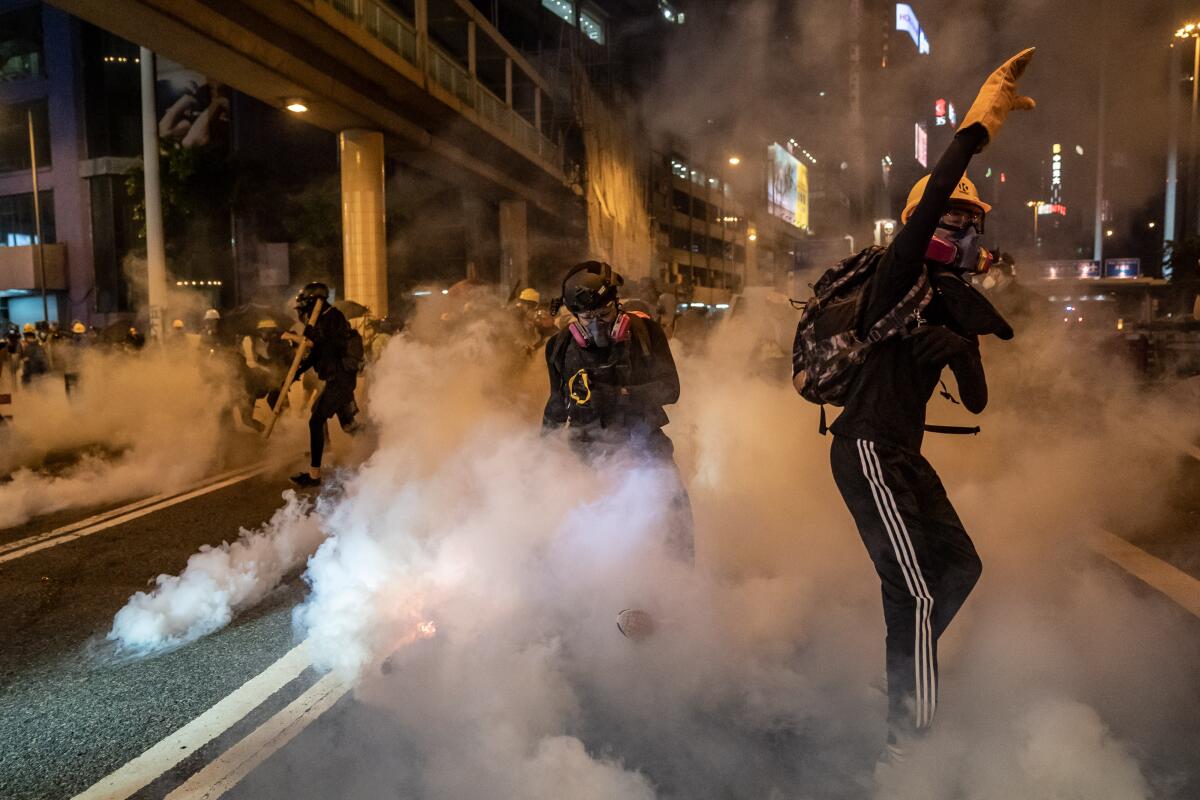
During one recent protest, Cheung was accompanying a group of demonstrators in Causeway Bay, a popular shopping district. Telegram groups were sending warnings that hundreds of mainlanders from Fujian province were amassed nearby in a pro-Beijing neighborhood and eager to brawl.
The young people around Cheung began shouting that they were going to confront the mainlanders.
“I told them, ‘No, wait, this is not going to work out,’” said Cheung, who followed them on to the subway in an effort to dissuade them.
He was ignored.
Still, he blamed to the rising aggression primarily on the police for using violent tactics and the Hong Kong government for refusing to listen or compromise.
“It is a lopsided game,” he said. “It’s David versus Goliath.”
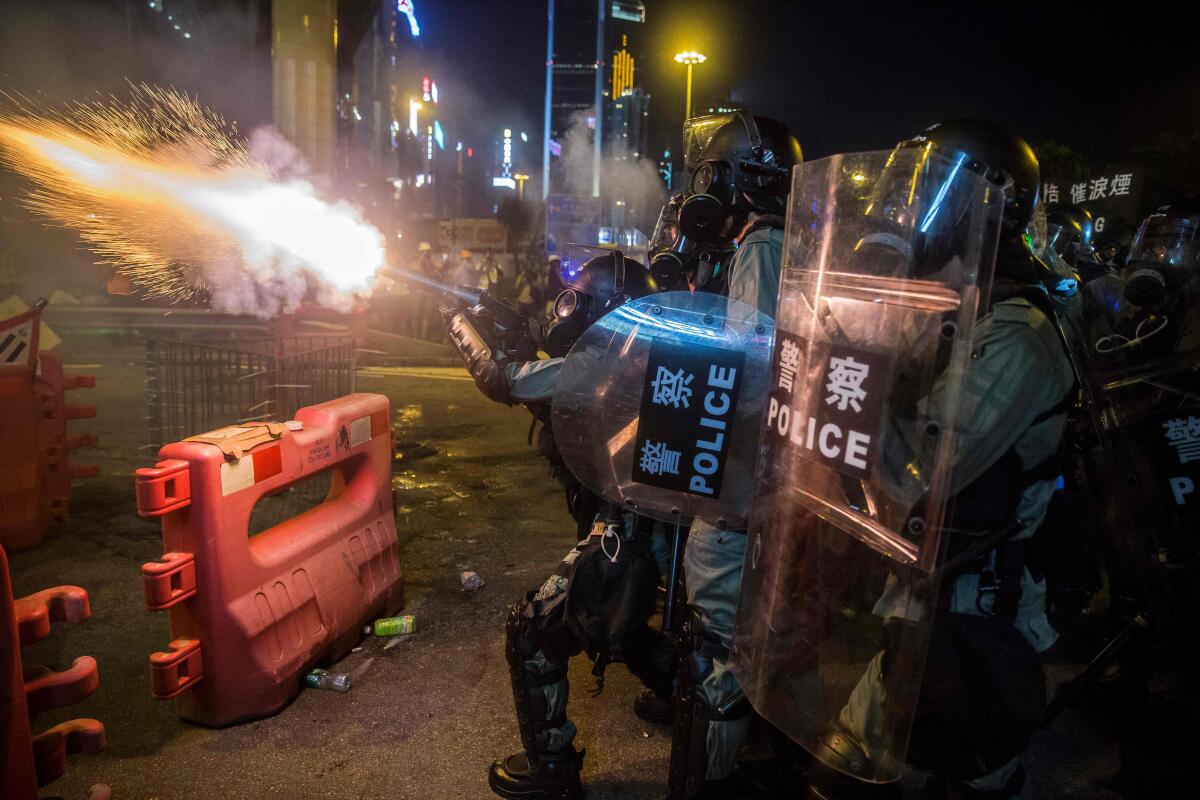
At a protest last weekend, police ruptured one young woman’s eyeball and allowed organized criminal gangs to attack protesters and bystanders. It is difficult to tally the injuries suffered by demonstrators, because many have been afraid to seek treatment. Several have been arrested at hospitals.
Beijing has also ramped up tensions by parading military and police forces at the border and accusing protesters of foreign-funded “terrorism.”
Cheung had tried to stop the violence at the airport Tuesday night, when protesters tied up and beat the two mainlanders: a suspected undercover policeman and an employee of the Chinese state-funded tabloid Global Times.
“We did not want that sort of physical attack, harmful behavior, to happen to anybody,” Cheung said. “It’s certainly worse than anything we want to accept or condone.”
“But on the other hand, the type of violence exhibited by the police and even the triads is easily 10 times or 100 times more severe.”
Fires, street fights, tear gas, and arrests roil the city as chief executive Carrie Lam backs the police and refuses to resign
Chan, who witnessed the attack on the Global Times man, described the chain of events that led to it.
Riot police briefly entered the airport, clashing with protesters and making several arrests. One officer had aimed a gun at protesters.
Just after the police just left, some protesters began shouting, then closed in on the man, accused him of being a spy, pulled off his press vest and restrained him with zip ties.
A few protesters objected, but others shouted back, “Don’t you know what the police have done to us?”
“All of us have a fear. The fear overrides everything,” Chan said, explaining why some protesters have resorted to violence. “Fear of being arrested, being hurt by police, the fear of losing another friend, another protester in any kind of protest, the fear of being prosecuted.”
Protesters were paranoid, Chan said, especially after several were arrested last weekend by undercover police posing as fellow demonstrators.
“You can’t compare what the protesters did with what the police did to us. This is not a fair judgment.”
Brian Leung Kai-ping, the protester who made news in June when he removed his mask inside the legislative council building, also defended the protesters’ actions.
He summed up the feelings of the demonstrators like this: “The police shoot at our people. Our people lost an eye and they have been allowing triad members to use knives to cut our members’ legs. We find an infiltrator who might harm us, and the first sentence you tell me is, ‘Do not use violence?’”
“Rationally, it makes sense. But morally, people would feel it’s unjust for you to say, under so much sacrifice and so much police brutality, you try to make me swallow a big moral lesson about doing nothing and tying our hands.”
Standoffs between demonstrators and authorities have become a weekly occurrence in Hong Kong, a semi-autonomous Chinese territory that has been roiled by a summer of fiery protest.
Leung dismissed the idea of designating leaders or setting absolute rules of engagement, preferring instead to trust the self-restraint of protesters and let tactics evolve more organically.
“If you write a certain code and call it a Bible, the Ten Commandments of Protest, I think people will reject it,” he said.
By Friday night, protesters had begun to gear up for the weekend demonstrations.
Baggio Leung, a former lawmaker and now spokesman for the pro-independence Hong Kong National Front, was handing out fliers for a rally.
Back in June, he told The Times he was worried that a lack of leaders would make it difficult to deescalate confrontations with police. Now he was less concerned.
“Protesters are human beings and they will be emotional, of course, especially when they meet spies,” Leung said, adding that it was “not a problem at all” for protesters to detain suspected infiltrators.
“Maybe the image is not really good, but they know what they’re doing and they’re doing the right thing.”
More to Read
Sign up for Essential California
The most important California stories and recommendations in your inbox every morning.
You may occasionally receive promotional content from the Los Angeles Times.
